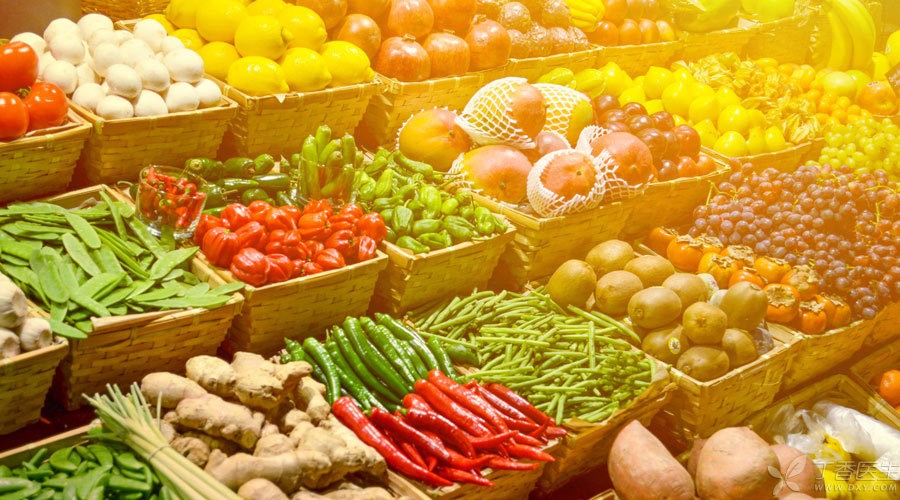
At the end of summer and the beginning of autumn, grapes, apples, pears, yellow peaches… a big wave of fresh fruits is coming.
Many people think that the fruits should be delicious in season.
However, if you think about it carefully, why are these fruits not so delicious in winter? Is there really such a big difference in nutrition and taste between seasonal and non-seasonal fruits?
What is the seasonal fruit?
First of all, we need to make clear a question: what is the seasonal fruit?
In the past, when production and transportation were underdeveloped, people could only buy fruits around their residence. For example, northerners loved apples, while southerners loved litchi. Coupled with the underdeveloped preservation and storage technology, many fruits could only be produced and sold now. This gave rise to the concept of season.
However, the problem has arisen. In today’s increasingly developed transportation, we not only have goods from the north and south of the great river, but also cherries from South America and apples from Africa have become frequent visitors to the dining table.
The word Ying Ji has been challenged again.
When the north is experiencing a cold winter, Hainan cherries and Chile cherries are in the ripe season. These fruits are undoubtedly seasonal locally, but they become out of season in the north.
The vast majority of non-seasonal fruits we encounter now are probably of this type.
Seasonal fruits are indeed better to eat.
Fruits in season are better than fruits in other times, which is not all psychological.
Whether it tastes good or not is related to sugars, acids and flavor substances in fruits, which are directly related to temperature and light.
For example, tomatoes produced in greenhouses in winter are not as delicious as those in summer because:
Step 1 Not enough temperature
Influence on sugar content: Experiments show that fructose and sucrose contents in mature tomatoes grown at about 27 ℃ are significantly higher than those grown at other temperatures.
Lack of special aroma: Aroma substances can be accumulated better only when the temperature is above 20 ℃ during maturity. Moreover, even after maturity, the temperature should not be too low during storage, otherwise the content of aroma substances will drop rapidly.
Obviously, most greenhouses in winter cannot fully meet the warm demand of tomatoes, which will naturally affect the taste of fruits.
Step 2: Not getting enough sun
Proper light supplement can not only increase the sugar content of these fruits, but also, more interestingly, with the increase of light, sucrose will transfer and concentrate to the center of the fruits, leaving sour skins.
Even in the country of origin, the taste of fruits will change with the seasons.
For example, in Xishuangbanna, although pineapples are produced all the year round, the best pineapples appear around the middle of July each year, which is the highest temperature in the year.
In this way, the seasonal fruit should not be the season, but the temperature and light during the fruit growth process.
Small Embarrassment of Transportation
Of course, some friends may hold different opinions:
You said that Hainan cherry tomatoes in winter are also the season, but there is no good taste of locally picked sand pulp tomatoes, so is Chile’s cherries, and some are not as good as Shandong cherries. Why is this?
The reason is very simple, everything is for transportation.
For long-distance transportation, fruits are invited into the packaging box before they are fully ripe. The aroma accumulation of fruits is closely related to maturity. For example, the flavor substances such as hexenal and hexanol in tomatoes will gradually increase with the ripening of fruits. Those Hainan tomatoes that are not fully ripe naturally have a little less aroma.
Pineapples are even more melodramatic. They do not store any starch in their bodies, so there is no matter that starch is converted into sugar and glucose. When picked, it is sweet or sweet, sour or sour. Those pineapples that are not mature can only be sour.
Flavor-independent nutrition
Fruit tastes better in season, is it more nutritious?
Not so. Scientists have found that light and temperature have much less effect on nutrition than taste.
For example, vitamin C has only changed by 10%, and the difference between 100 grams of cucumbers is less than 2 milligrams, that is to say, eating a few more slices of Chinese cabbage can make up for it.
After all, eating seasonal fruits is to make them fresh and delicious, so we don’t have to have too much entanglement in nutrition.
On the other hand, eating local seasonal fruits is not only more economical and practical, but also conducive to environmental protection, which can greatly reduce energy consumption in the process of production and transportation, and is also a contribution to the maintenance of blue sky and green water.
Of course, if you are a moat, there is nothing wrong with having to fly around to eat seasonal fruits.
